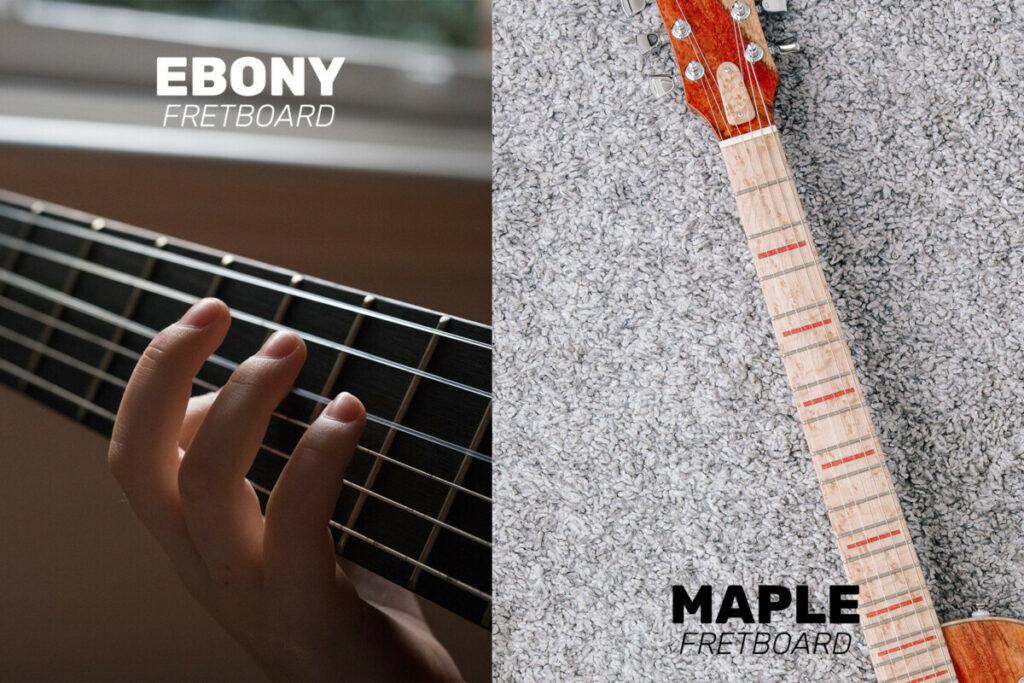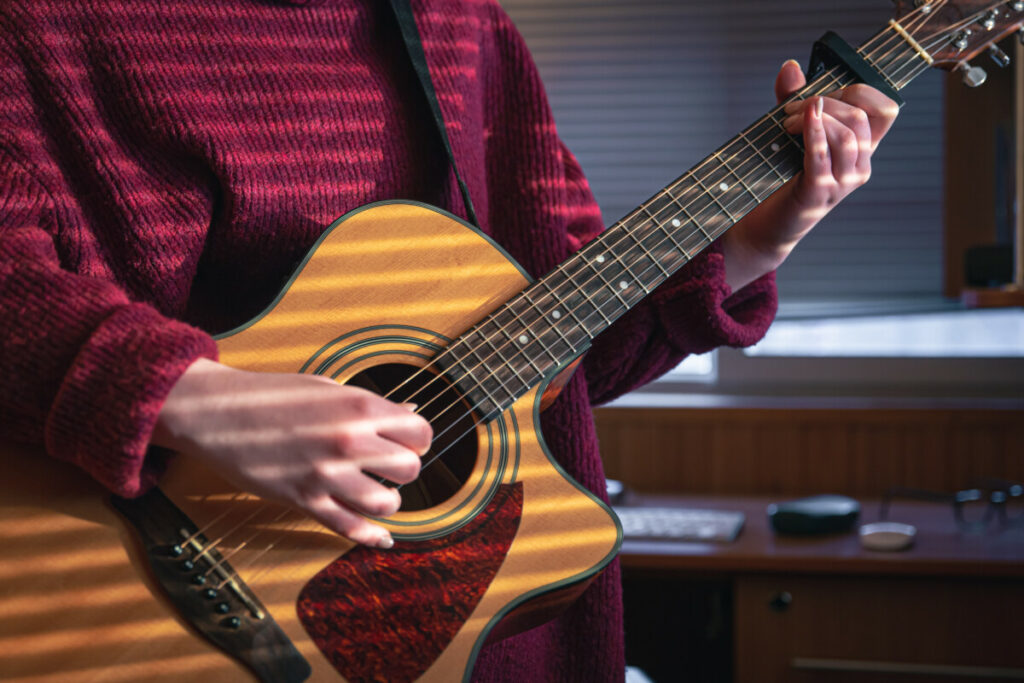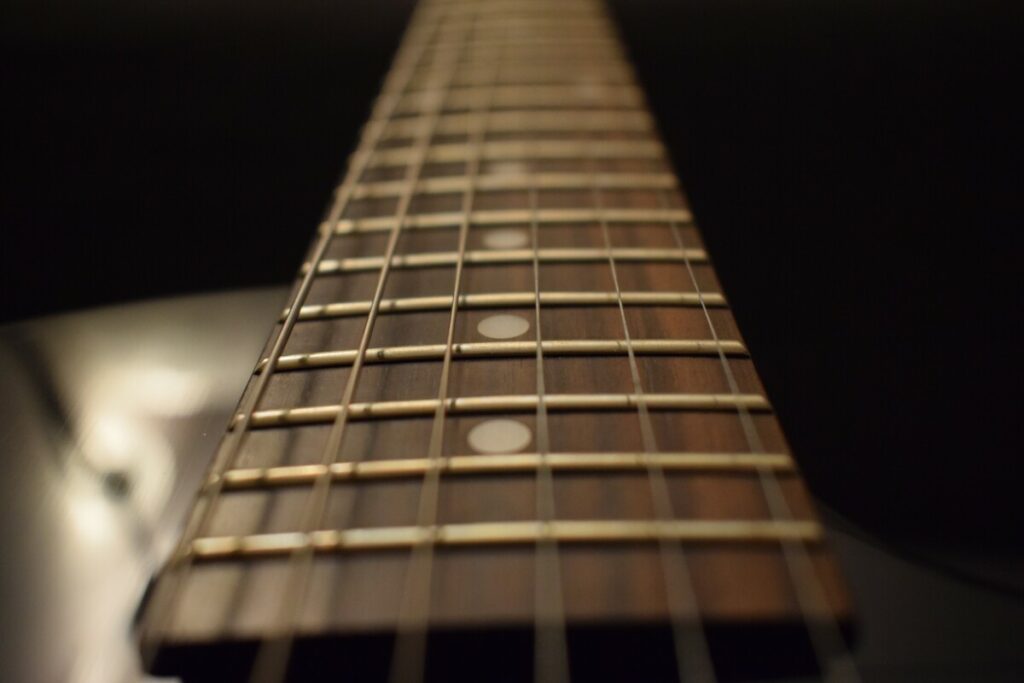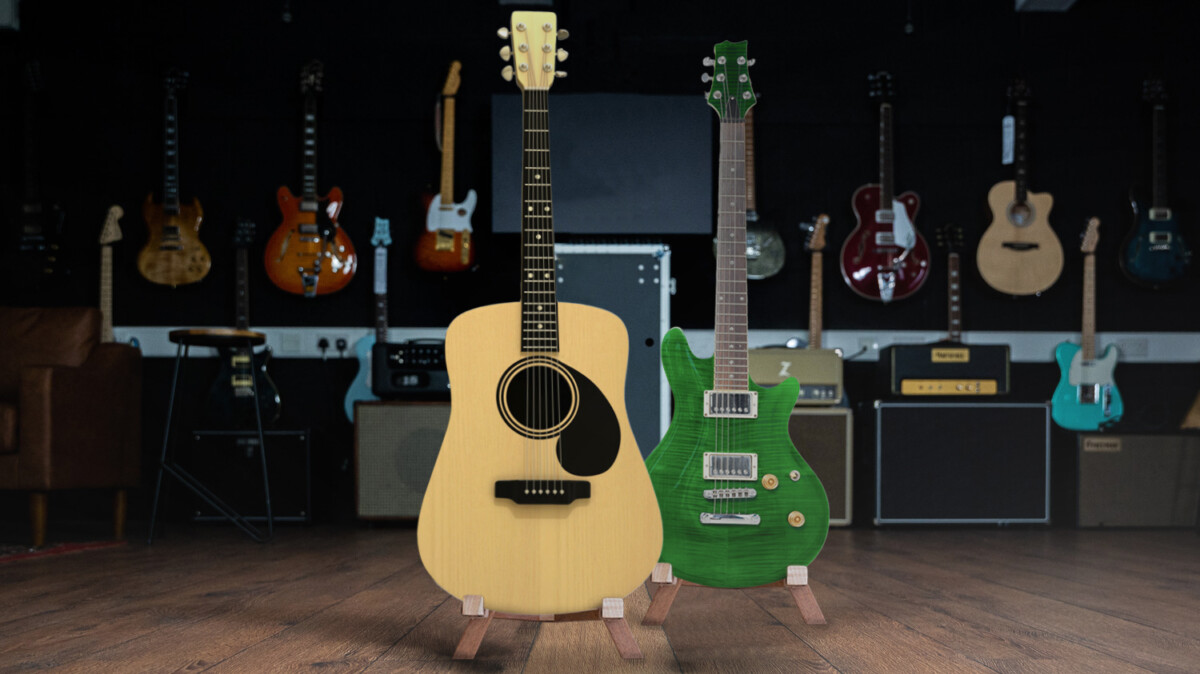In the world of guitar fretboards, two materials reign supreme: Ebony and Maple. But like a classic rock debate, the question remains – which one reigns supreme?
This article “Ebony vs Maple Fretboard” aims to settle the score once and for all with a side of humor. We’ll explore the highs and lows of each material, and you’ll be the judge.
Whether you strum like Jimi Hendrix or just starting out, this article will be music to your ears. So grab your guitar and let’s rock this comparison!
Ebony vs Maple Fretboard – Key Differences
So, it’s time to settle the score once and for all in the classic guitar debate of Ebony vs Maple fretboards!
Both materials have their own unique set of features and specifications, and it’s time to take a closer look at each of them to determine which one comes out on top.
Let me give you the ultimate showdown of Ebony vs Maple fretboards.
Appearance

In terms of appearance, both ebony and maple have their own unique style.
Ebony takes the crown with its dark and mysterious looks, giving your guitar a clasic and elegant appearance. The dark color of ebony fretboards offers a stark contrast to the rest of the guitar, making it stand out in a crowd.
However, maple isn’t far behind, with its bright and cheerful personality. Maple fretboards offer a lighter, more natural apearance, and can add a touch of brightnes to your guitars overall look.
Let’s call this one a tie, as beauty is in the eye of the beholder.
Durability
When it comes to durability, ebony takes the win. Its dense and solid construction makes it ideal for heavy-handed guitar players, and it can withstand the test of time. Ebony fretboards are known for their longevity and resistance to wear, making it a great option for those who play their guitars frequently.
On the other hand, maple is like a delicate flower, easily crushed under heavy struming. Maple fretboards are not as durable as ebony and can be prone to wear and yellowing over time, especially with frequent use.
Tone

The tone is one of the most important aspects of a guitar, and both ebony and maple have their own unique sonic qualities.
Ebony delivers a rich and warm tone, like a smooth cup of hot cocoa. The dense nature of ebony contributes to its rich and warm tone, making it ideal for those who prefer a darker sound.
Maple, on the other hand, brings a bright and snappy attack, like a shot of espresso. The lighter and brighter tone of maple makes it ideal for players who prefer a brighter and more articulate sound.
This one’s a toss-up, as it depends on your preferred flavor of tone.
Feel
The feel of a guitar is just as important as its tone, and both ebony and maple have their own unique playing surfaces.
Ebony provides a smooth and fast playing surface, like a freshly waxed car. The dense and solid construction of ebony makes it ideal for players who prefer a smooth and fast playing surface.
Maple, however, offers a slightly harder feel, like a firm hanshake. The harder playing surface of maple can be ideal for players who prefer a more tactile feel. When it comes to cleaning the fretboard, both maple fretboard cleaning process and the ebony fretboard cleaning process are similar. If you are after a maple fretboard guitar, I’d recommend the Fender American Special Stratocaster.
This one’s another tie, as it comes down to personal preference.
Cost
When it comes to cost, maple takes the win. Ebony is like a rare gem, difficult to find and expensive to purchase. The rare and expensive nature of ebony makes it less acessible to guitar players on a budget.
Maple, on the other hand, is more accessible and budget-friendly. It’s easier to source and is typically less expensive than ebony, making it a great option for those who are looking to save some money.
Pros And Cons Of Ebony And Maple Fretboards

After I mentioned everything else, I would like to share the pros and cons of both ebony and maple fretboards, so you can have a clearer idea on why you should choose them or avoid them somehow!
Ebony Fretboard:
First and foremost, let me tell you the pros and cons of Ebony fretboard, they include:
Pros:
- Durable and long-lasting
- Rich and warm tone
- Smooth and fast playing surface
- Ideal for heavy-handed guitar players
Cons:
- Rare and expensive material
- Less accessible to guitar players on a budget
Maple Fretboard:
Next on, there are also pros and cons about the Maple fretboards, and they are:
Pros:
- Budget-friendly and easier to source
- Bright and snappy attack
- Slightly harder playing surface
- Ideal for players who prefer a more tactile feel
Cons:
- Prone to wear and yellowing over time
- Not as durable as ebony
- Yellowing can become more noticeable with frequent use.
How To Choose The Right Fretboard? – Considerations To Have In Mind
Choosing the right fretboard for a guitar can be a tough decision, but with a little bit of humor and some wise advice, you’ll have that guitar shredding in no time!
Firstly, ask yourself, “What’s my jam?” If you’re into a warmer tone for jazz or blues, an ebony fretboard might be the way to go. But if you prefer a brighter and snappier attack for rock or metal, you might want to consider a maple fretboard.
Secondly, consider your wallet. Ebony is a rare and expensive material, while maple is budget-friendly and easier to source.
Thirdly, put your money where your fretboard is – try playing guitars with both types of fretboards to see which one feels the best for you.
Last but not least, seek advice from a guitar professional or salesperson. They can give you a better understanding of your options and steer you in the right direction.
In the end, the right fretboard for a guitar is the one that feels the best and provides the tone you desire. So, go ahead and make a decision, but remember, don’t fret too much – it’s just a fretboard!
Final Words
In conclusion, both ebony and maple have their own unique set of advantages and disadvantages.
Its up to you, the guitarist, to decide which material is best suited for your playing style and tone preferences as it is completely aimed at you and choose the one that will fulfill your needs.
So, whether you prefer the rich and mysterious ebony, or the bright and cherful maple, the choice is yours!

